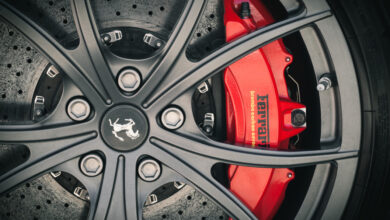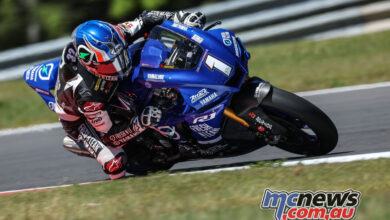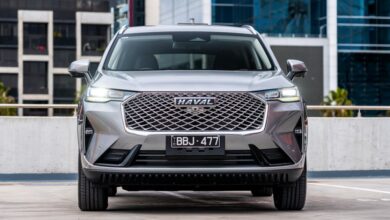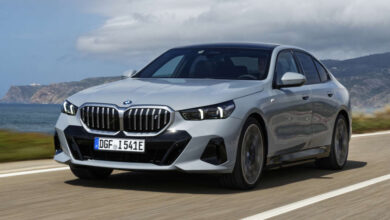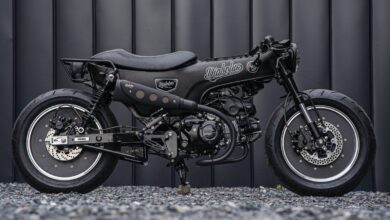Triumph Rocket 3 Storm R Review – Motorcycle Test
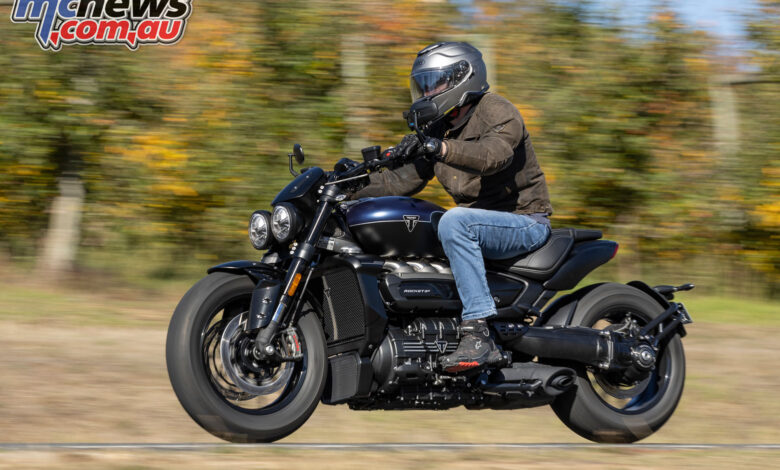
2024 Triumph Rocket 3 Storm R & GT Review
Images by Dean Walters
Triumph’s Rocket 3 has, since it’s inception, been a very special behemoth of a bike. Engines this large with the torque outputs this vast, normally belong in cars. Or small tanks. But despite its sheer size and presence, the Rocket 3 has always been a very well-mannered bike which out-handles and out-stops many smaller and lighter bikes. It certainly out-grunts every mass-produced bike on the planet.
It has been updated for 2024 and given a new model name for the two variants – the Rocket 3 Storm R and Storm GT. Like before, the GT is more about cruiser and tour-oriented ergos, while the R is fitted with mid-mounted controls and flatter handlebars.

This is the first time I’ve had the chance to ride the new Rocket 3, and to say I was looking forward to it is an understatement. The Rocket 3 is as much a statement as it is a motorcycle, and the numbers attached to it are simple, mind-blowing.
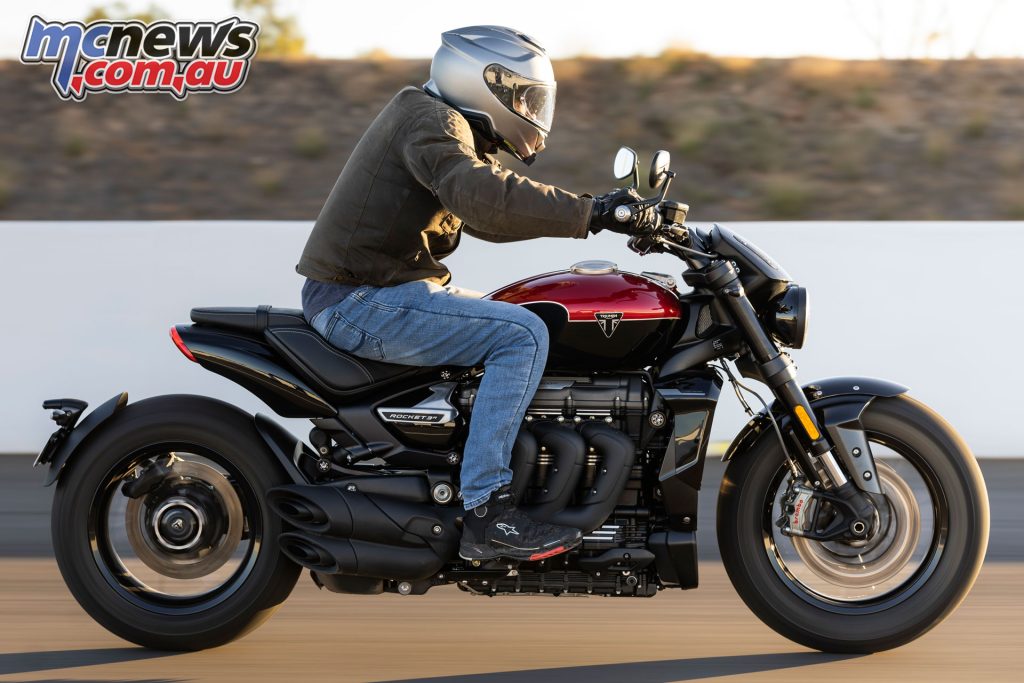
Here’s a quick refresher if you’re out of the loop…
In 2019, Triumph debuted its Gen Two Rocket 3. It had a larger-capacity engine – up 200 cc from 2300 to 2500, but with a 40 kg weight-saving and an enormous design revamp. Fast forward to 2024, and Triumph has gone for the more is better plan. A further 15 PS has been added to its power output, with the torque marginally increased by 4 Nm, so you’re getting a smoother torque curve down low and a better top-end.
The wheels are also lighter – and reducing unsprung weight on any bike, espeically one this vast, is a great thing – and shared between the two models. And the Storm is all about the black. The bike looks like it’s been dipped into the heart of darkness itself. Which, when you think about it, seems entirely appropriate.
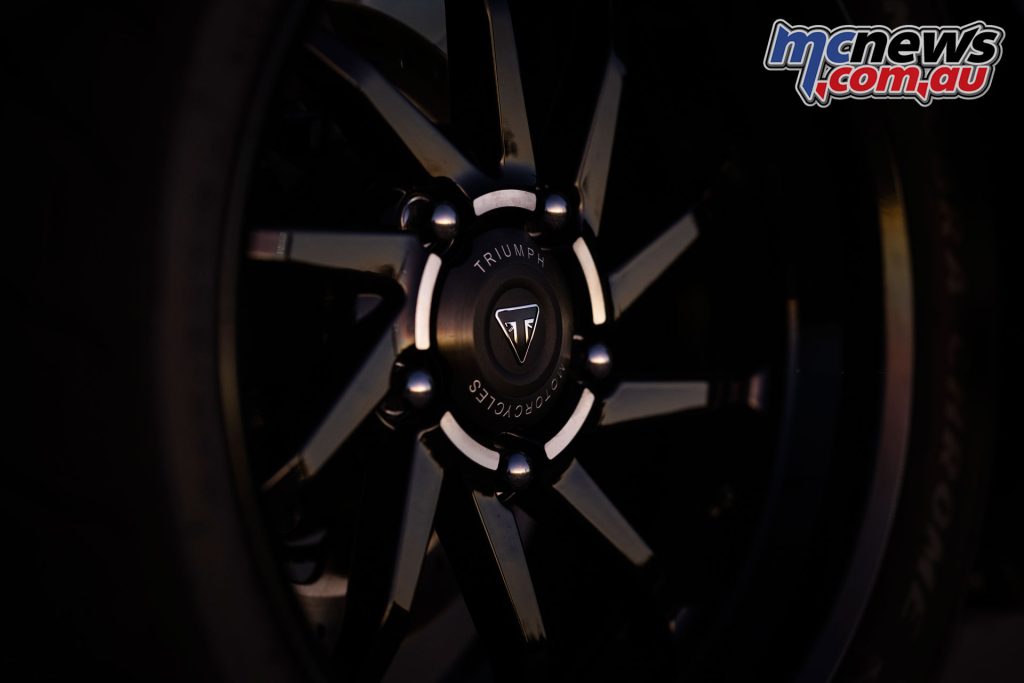
The entire focus of the Rocket 3 has always been its incredible engine – and that has not changed. That ‘2500’ in-line triple (actually a 2458 cc), is a statement in and of itself, dominating the bike and offering a mountainous 225 Nm of torque. And that torque is there seemingly from idle and just gets hosed hard to the back wheel throughout the rev range, with a surprisingly manageable low-end that makes even city traffic easy. It’s only a monster if you ask it to be one.
Of course, 225 Nm is a staggering amount of torque, even from a triple, which mixes the best attributes of a twin and four-cylinder, even in the much smaller capacity versions. The Rocket 3 takes that to another level entirely, and is undeniably off-its-chops.
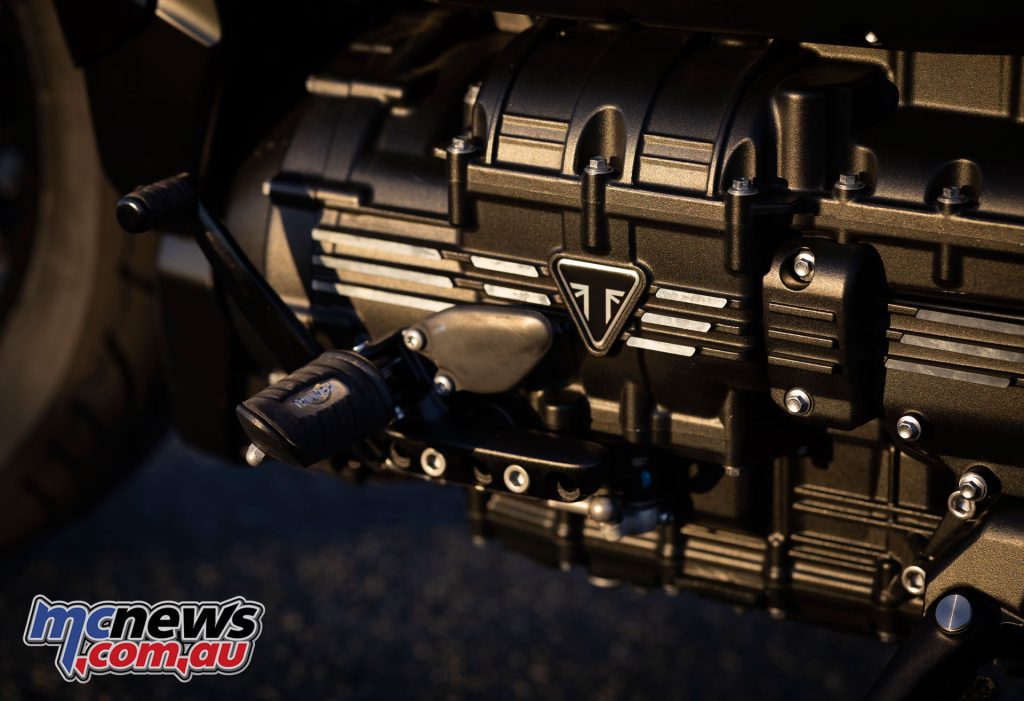
The bike tips the scales at over 300 kg, with a massive 240-section rear tyre, and a 150 on the front, which, alongside its muscle-cruiser theme, would have you forgiven for thinking this bike is a straight-line monster that’ll be found lacking in the twisties… or just for general riding.
Nothing could be further from the truth, unless you’re expecting supersport-level agility, which would be silly. For a big, long, relatively heavy machine, even one sprung by some hefty Showa suspension to handle that weight, the Rocket 3 is quite the weapon through the bends. Whatever magic the Triumph engineers have employed to make this work in corners is very potent. Because it does work in corners.
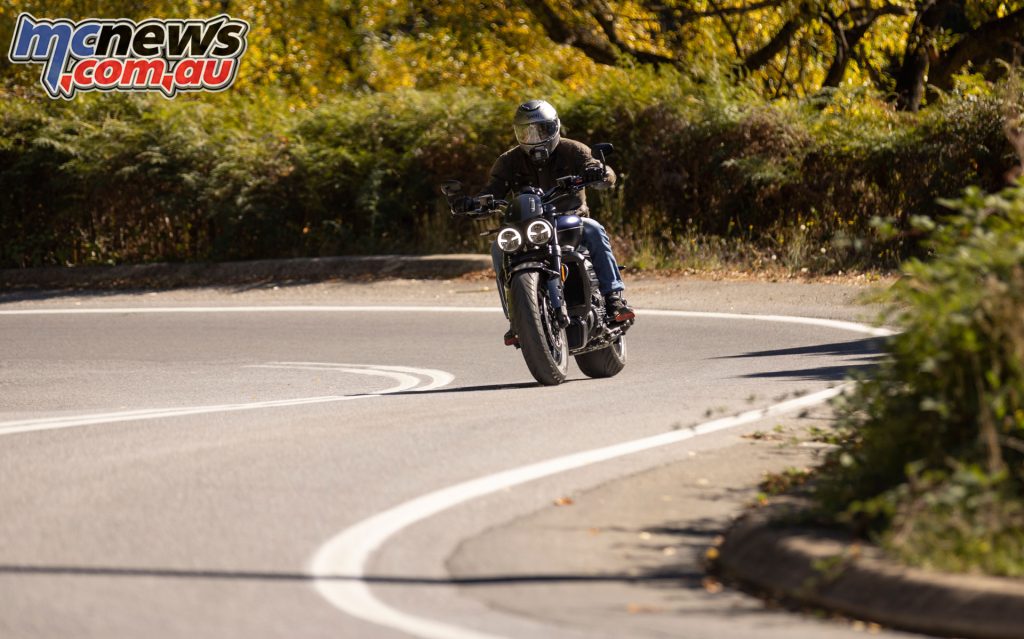
In fact, spending much of the day on the Rocket 3 R, I was, at times, needing to reign in my inputs, with the bike not at all railroading into wide sweeping lines through the corners, the way the huge rear tyre could suggest. It is amazingly agile, and that messes with your head a bit because you’re always aware of its size and sheer road presence. And then you encounter corners and it’s just dealing with them brilliantly.
Heading out of Adelaide towards Tailem Bend threw enough twisties at me to put this agility to the test. The Rocket 3 R delivered in spades, utilising the bucketfuls of torque to punch insanely hard out of corners, and smooth engine-braking for knocking the bike down a gear to wash off a bit of speed on entry.
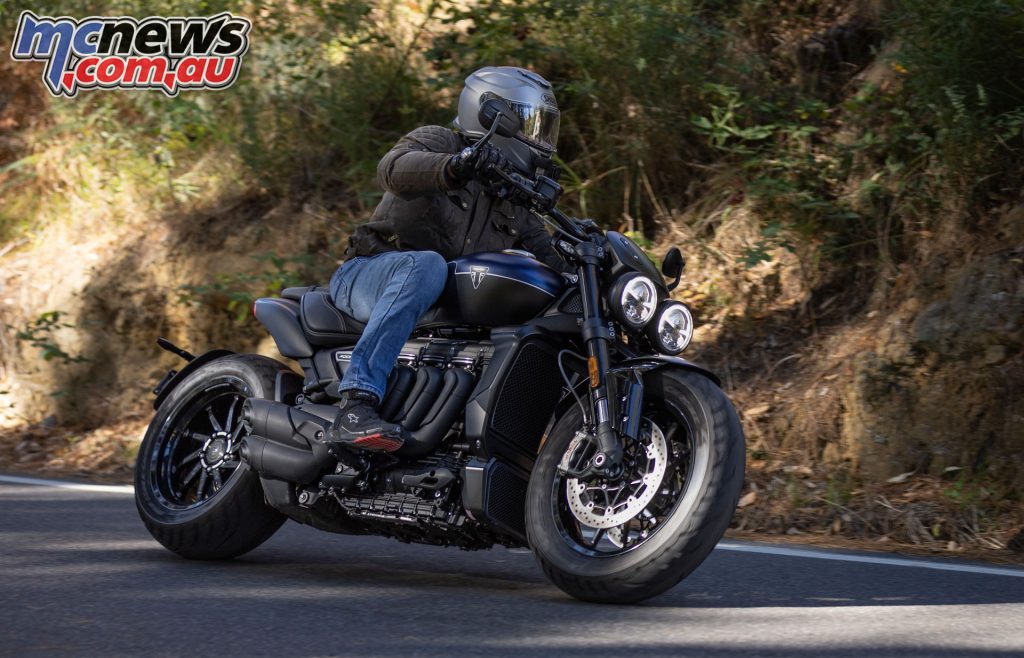
Riding it in anger only makes it even more impressive. The way it delivers its torque, the way it tracks around all sorts of corners, is simply amazing. Just in case you were under the impression it’s been watered down by electronic rider aids, it hasn’t. But that just adds to the fun, and I wasn’t even dialling back those rider aids.
Those Brembo Stylema calipers on the front are impressive, as is the M4.32 four-pot caliper on the rear, but I’ll admit to preferring engine braking when stringing corners together, purely because the engine braking was strong but smooth. I was even occasionally knocking it down two cogs instead of one.
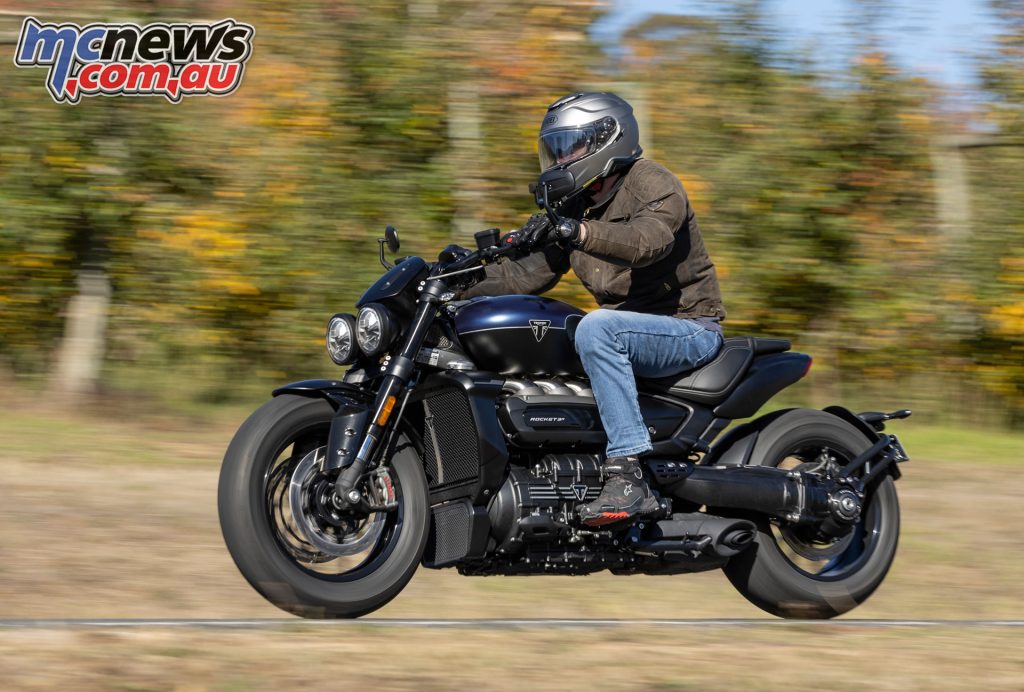
Where the gearbox could be a bit clunky between first and second gear around town, tall gears make the changes not too frantic. The heat off the exhaust was a bit of a problem when I got stuck at traffic lights – specifically on my brake-side foot, but once out onto the more flowing roads, then there was no noticeable heat.
Snicking through the gearbox on the gas was easy – requiring just a hint of clutch and pre-loading that shifter. The radiant heat was swept away and the biggest challenge was figuring out how to create opportunities to open that throttle hard. That crazy torque-number is a gift that just keeps on giving unlike any other bike you’d care to name.
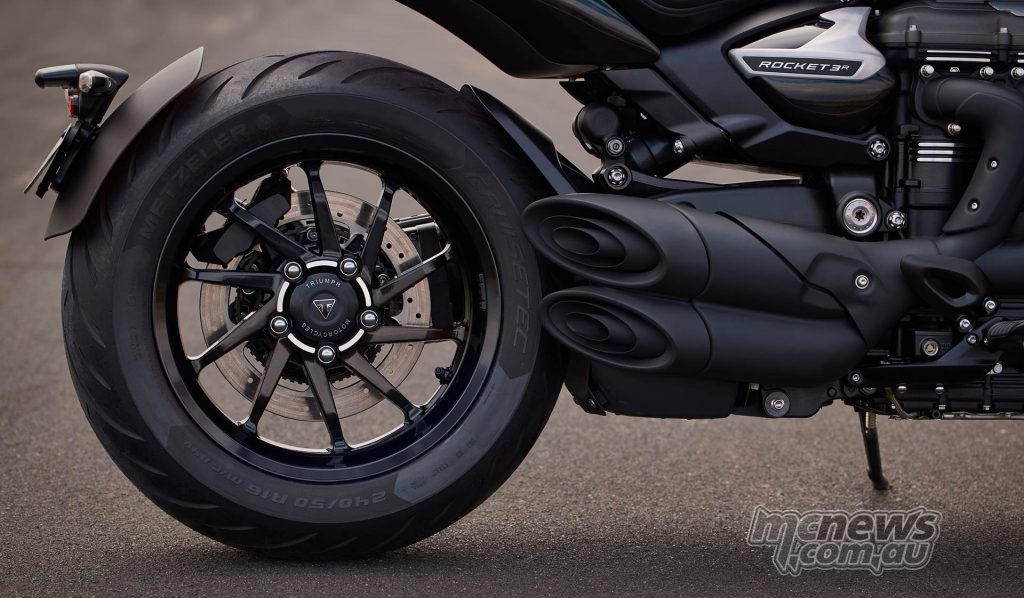
But I did need to tinker with that rear suspension. The Showa shock offered a preload-adjuster, as well as compression and rebound. I only had a chance to play with the preload, which was at its hardest setting when I checked it, and was causing the harsher bumps to really compact my spine, as well as affecting the steering through some of the twisties, which doesn’t help with confidence when you’ve got 225 Nm on tap and a 320kg bike.
By contrast, those massive Showa forks on the front-end are compression and rebound-adjustable, and I didn’t really feel the need to meddle with the settings there.
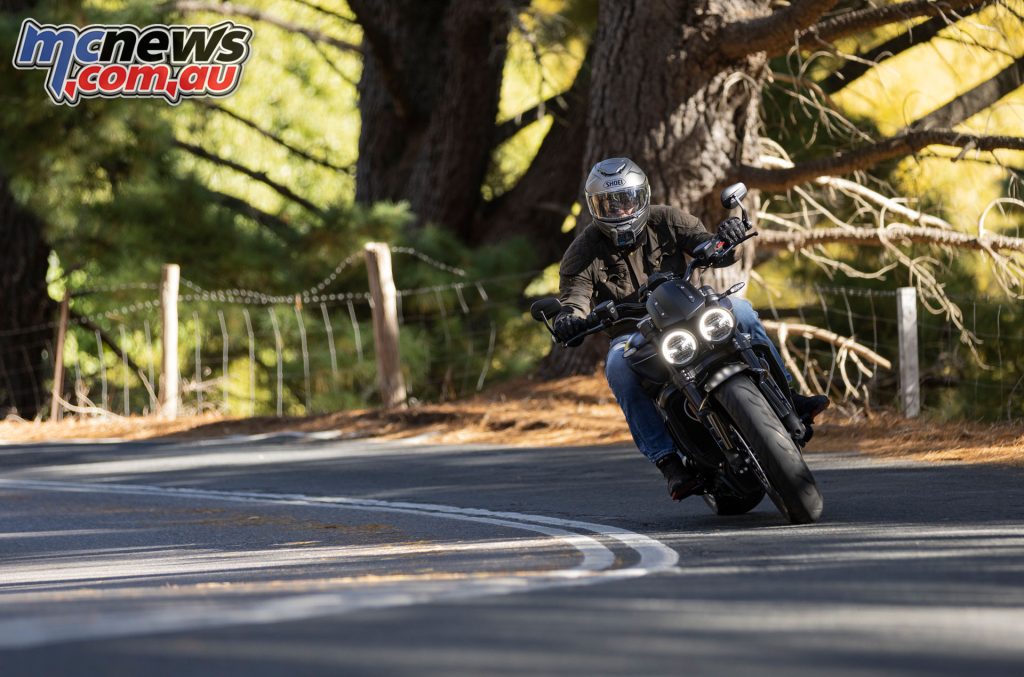
Softening that preload on the rear shock helped, but I think spending a few days to match the settings to your local roads is probably going to pay dividends, with the Rocket 3 favouring smoother road surfaces. Certainly, the roads out of Adelaide reminded me of our own in NSW, some good, many not too good. A rear-end struggling to cope with harsher and bigger bumps is generally a common issue on this style of machine from what I’ve seen, but full adjustability gives you heaps of room to dial the bike in at the rear.
As we got closer to The Bend, the open roads gave me a further opportunity to experience that torque. The Rocket 3 will pull from essentially idle in any gear right up through the rev range, snick into the next gear, and repeat.
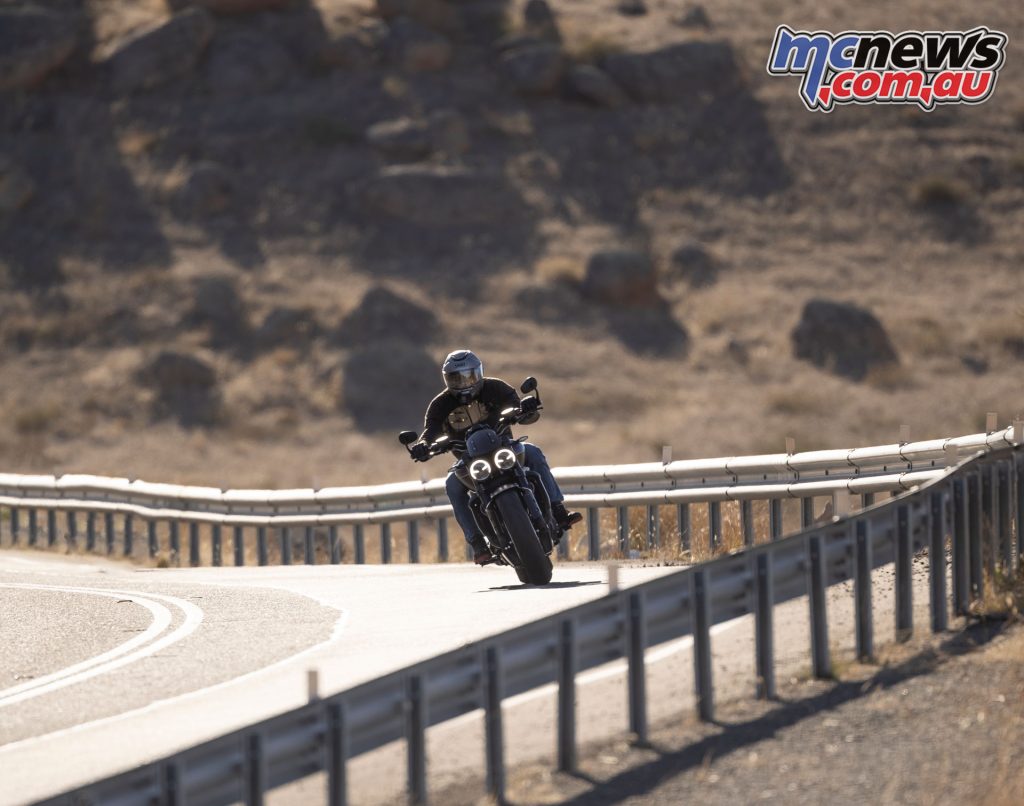
There is also a pretty impressive electronics package here, too. You have four ride modes, one of which is a Rider specific map, but I’ll admit to cycling through and eventually leaving the bike on Sport, with the preset cornering ABS and traction control settings working fine for me, and not at all intrusive.
The dash is clear and easy to read at a glance, and the switch-blocks, while busy, allow for easy changes of mode via a specific button, as well as cruise control and a joystick for going into the available settings more deeply. My only complaint there was I kept hitting that joystick instead of the indicator toggle. Oops. Owners will eventually get used to not doing that.
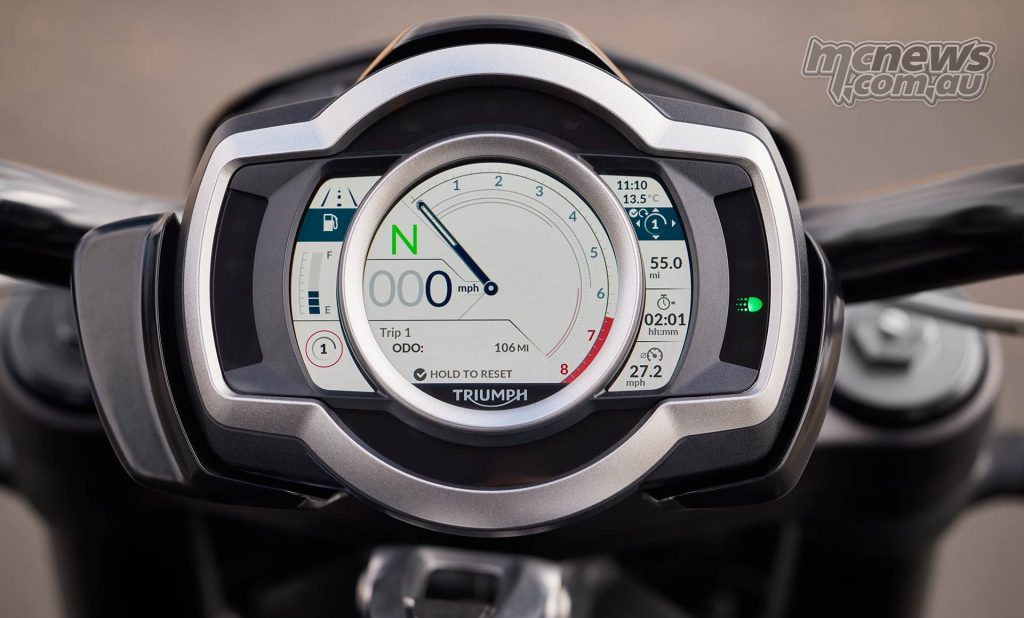
In terms of ergonomics, the Rocket 3 Storm R runs the mid-controls, flatter ‘bars, and a taller seat. The GT offers a pillion back rest, some slight wind protection, drawn-back ‘bars, forward controls, a lower seat, and tweaked suspension settings, for that more Grand Turismo travel.
I’d take the drawn-back GT ‘bars on the R, as I was a bit stretched to the R’s flatter set-up, especially when hard on the gas and having to hold on for dear life as the bike tried to pull my arms out of their sockets. And that is not an exaggeration. Slam that throttle open and you will only forget to hang on once.
I preferred the mid-mounted controls, apart from the heat issue.. Heavier leather boots would help there, but there was a lot of heat hitting the foot when we got stuck at Adelaide’s long traffic lights.
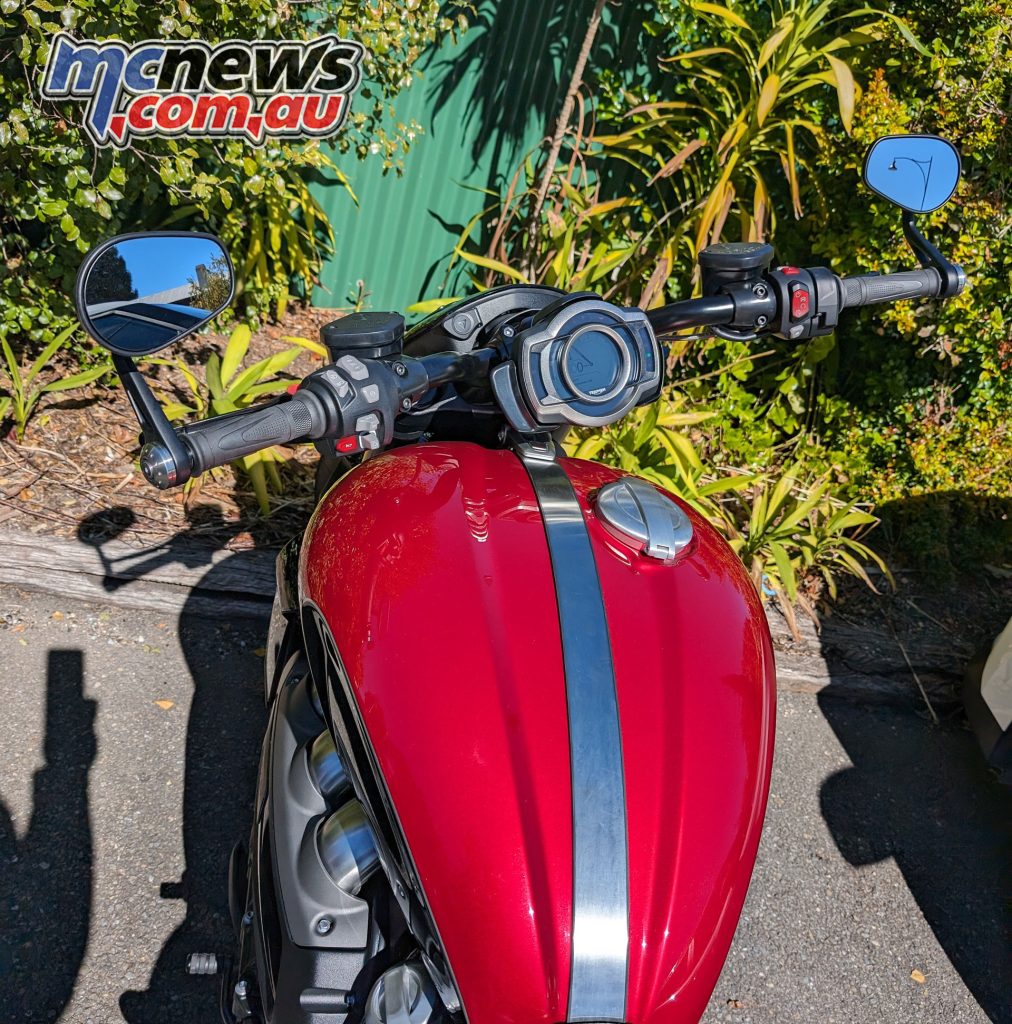
A highlight of the launch were some runs down the new, world-class dragway at The Bend Motorsport Park. It was my first time riding on a dragstrip, so another first, and the opportunity to go hell for leather on the Rocket 3 in a venue where speed was not a limitation.
I saw just shy of 200 km/h at the quarter-mile mark, with the bike still pulling hard and accelerating with fire in its heart. I’m sure I could not have gotten a better insight into just what the Rocket is capable of. And it’s easy to see how riders get hooked on chasing those quarter-mile times!
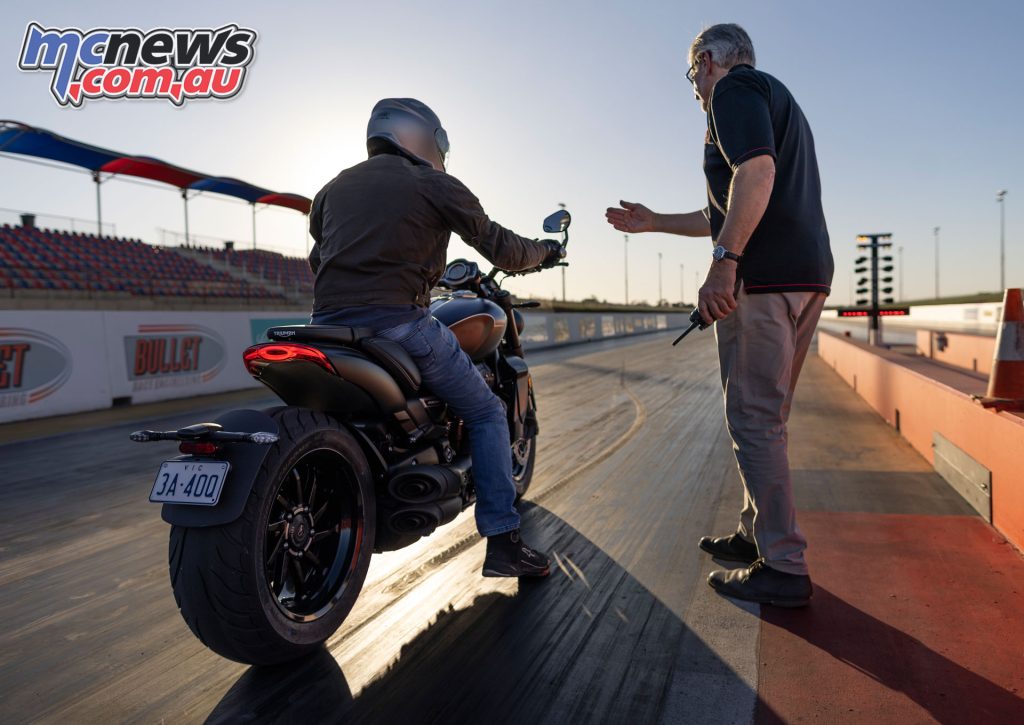
The electronics weren’t too intrusive for my not-so-impressive pace, the bike was incredibly stable and planted, considering the torque hitting that back wheel. The acceleration was staggering, with smooth up-shifts. And keep in mind these bikes had no quick-shifters.
The Rocket 3 Storm really exceeded my expectations. I expected the mind-blowing performance and torque…well, as much as it is possible to expect such a thing when you’ve never ridden anything like this before.
But the impressive handling and responsiveness was a very welcome surprise. Coupled with a great brake set-up and a comprehensive electronics package, the Rocket impresses on every level, and that is utterly unique. It is in a class and market-segment all on its own.

Was the bike perfect? No, but the Rocket 3 is bloody amazing, and I’d be lying if I didn’t admit to triples having a special place in my heart. The bike delivered there too, with that typical triple burble, far meatier than the other triples in the Triumph range. But then look at the size of the engine. There’d be something wrong if it didn’t have a great note even through its stock exhaust
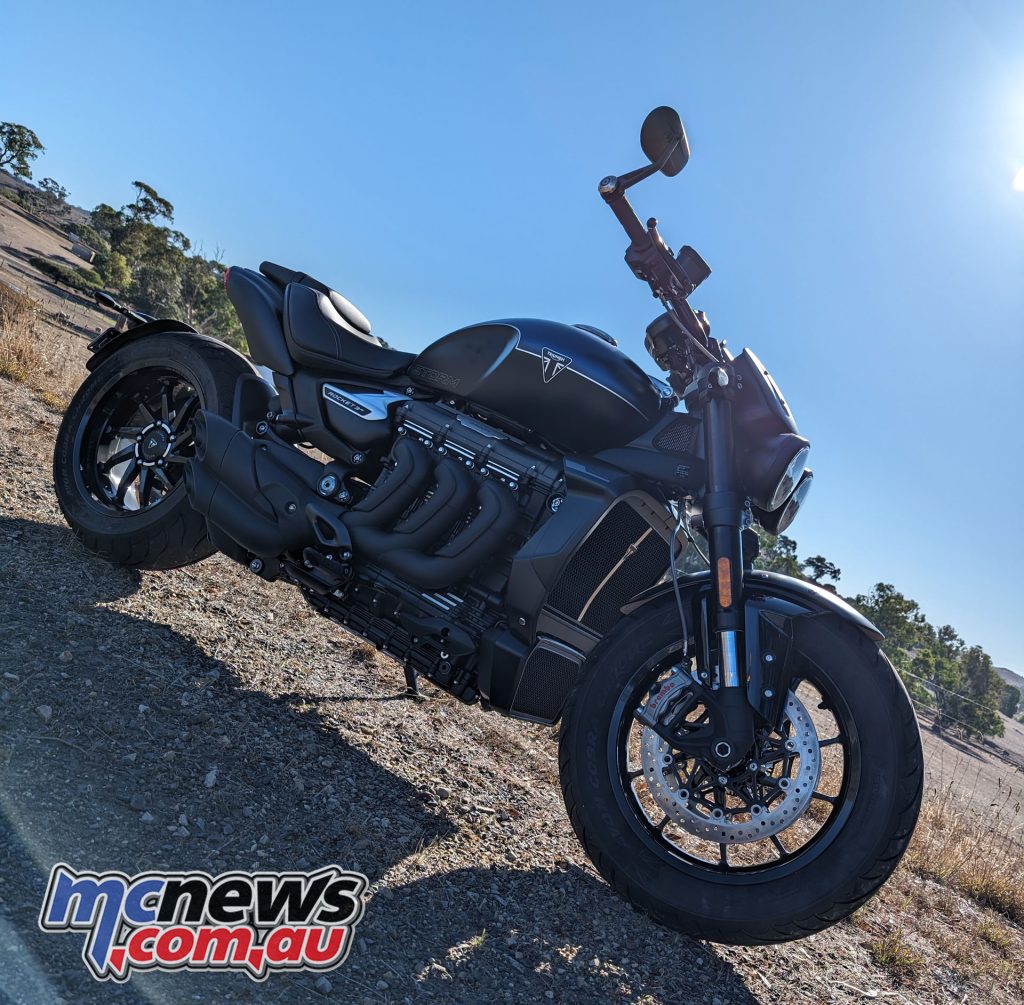
Typically for Triumph, the quality of finish on these bikes is next-level. By all means, check one out up close and personal and you’ll see what I mean.
There’s some very nice little details, like the fasteners, and the dash (where you can change the viewing angle). The impossibly stable bar-end mirrors have mega-adjustability, the pillion pegs are artfully integrated, and that single-sided swingarm and rear-wheel are works of art.
The new Rocket 3 is more powerful than the previous Rocket 3, but every bit as well-finished, polished, and astonishingly capable, whether ridden in anger, just commuting around town, or big-distance touring. I am a bit of a convert.
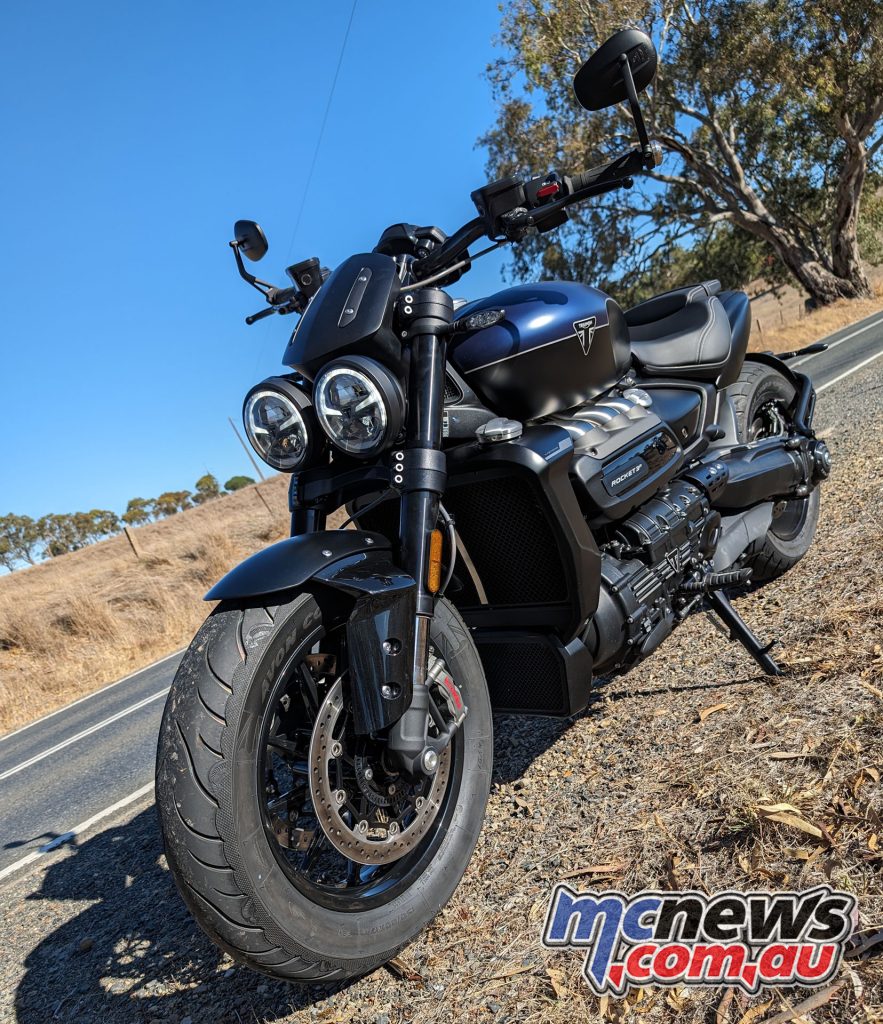
Head to the Triumph Motorcycles Australia website for more information.
What I like about the Triumph Rocket 3 Storm:
- Amazing engine, unique in being a triple-cylinder.
- Far better handler than I’d have dared to hope.
- Extensive but simple electronics loadout, intuitive.
- The two variants offer subtle but meaningful differences.
- Surprisingly comfortable ergos.
I’d like the Rocket 3 Storm better if…
- A semi-active rear shock wouldn’t go astray for the price…
- Free-er flowing exhaust to avoid bottling up heat, and provide some roar.
2024 Triumph Rocket III Specifications
| 2024 Triumph Rocket III Specifications | ||
| ROCKET 3 STORM R AND GT | ROCKET 3 STORM GT | |
| Type | 2,458 cc Liquid-cooled, inline 3-cylinder, DOHC | |
| Bore & Stroke | 110.2 mm x 85.9 mm | |
| Compression | 10.8:1 | |
| Maximum Power | 182PS / 180 bhp (134 kW) at 7000rpm | |
| Maximum Torque | 225Nm (166ft-lb) at 4000rpm* | |
| Fuel System | Ride-by-Wire, fuel injected | |
| Exhaust | Stainless steel 3-into-1 headers with 3 exit silencer | |
| Final Drive | Shaft drive, bevel box | |
| Clutch | Wet, multi-plate, hydraulically operated, torque assist | |
| Gearbox | 6 Speed | |
| Frame | Full aluminium frame | |
| Swingarm | Single sided, cast aluminium | |
| Front Wheel | 17 x 3.5-inch cast aluminium | |
| Rear Wheel | 16 x 7.5-inch cast aluminium | |
| Front Tyre | 150/80 R17 V | |
| Rear Tyre | 240/50 R16 V | |
| Front Suspension | Showa 47mm upside-down 1+1 cartridge front forks, compression and rebound adjustment, 120mm wheel travel | |
| Rear Suspension | Fully adjustable Showa piggyback reservoir RSU with remote hydraulic preload adjustment, 107mm wheel travel | |
| Front Brakes | Dual 320mm discs, Brembo M4.30 Stylema® 4-piston radial monobloc calipers, Optimised Cornering ABS | |
| Rear Brakes | Single 300mm disc, Brembo M4.32 4-piston monobloc caliper, Optimised Cornering ABS | |
| Instruments | TFT multi-functional instrument pack with; | |
| Digital speedometer | ||
| Trip computer | ||
| Digital tachometer | ||
| Gear position indicator | ||
| Fuel gauge | ||
| Service indicator | ||
| Ambient temperature | ||
| Clock | ||
| Rider modes (Rain/Road/Sport/Rider-configurable) | ||
| Triumph TFT Connectivity System can be added with accessory fitted Bluetooth module | ||
| ROCKET 3 STORM R | ROCKET 3 STORM GT | |
| Length | 2365 mm (93.1 in) | |
| Width (Handlebars and fittings) | 920 mm (36.0 in) | |
| Height Without Mirrors | 1125 mm (44.3 in) | 1183 mm (46.6 in) |
| Seat Height | 773 mm (30.4 in) | 750 mm (29.5 in) |
| Wheelbase | 1677 mm (66.0 in) | |
| Rake | 27.9 ° | |
| Trail | 134.9 mm (5.3 in) | |
| Wet weight | 320kg | 317kg |
| Fuel Tank Capacity | 18.0 litres (4.76 US gal) | |
| Standard Equipment | Full colour TFT instruments | |
| Optimised cornering ABS & traction control – supported by an IMU | ||
| 4 riding modes | ||
| All LED lighting, with DRL* headlight | ||
| Hill hold control | ||
| Cruise control | ||
| Keyless ignition | ||
| Backlit switchgear | ||
| USB charging | ||
| / | + Heated grips | |
| Accessory-fit | Triumph Shift Assist | |
| TPMS | ||
| Bluetooth connectivity module (enabling turn-by-turn navigation, phone | ||
| and music operation) | ||
| Fuel Consumption | 42.8 mpg (6.6 l/100km) | |
| CO2 Figures | 152 g/km | |
| Standard | EURO 5 | |
